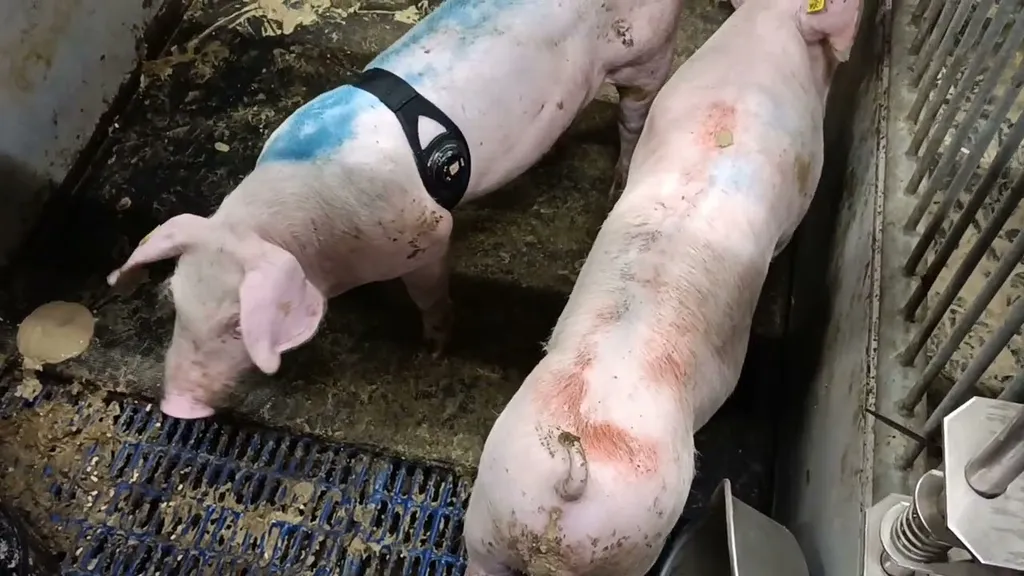In the heart of China’s agricultural innovation, a groundbreaking study led by Yigui Huang from the Key Laboratory of Smart Agricultural Technology in Tropical South China and the School of Electronics and Information Engineering at Wuyi University is revolutionizing how we understand and care for pigs. The research, published in the journal *Smart Agricultural Technology* (translated from Chinese as *智能农业技术*), introduces a novel method for classifying pig behaviors using wearable sensors, promising to enhance production efficiency and animal welfare.
The study addresses a critical need in the swine industry: the timely detection of abnormal behaviors to assess pig health. Traditional methods often struggle with indistinct behavioral features and the sheer volume of data, making manual classification a daunting task. Huang and his team tackled this challenge head-on by collecting 3-D accelerometer data from ear tags on 40 pigs over a 60-day period. “We wanted to create a system that could accurately and efficiently classify pig behaviors, providing farmers with valuable insights into their animals’ health and well-being,” Huang explained.
The researchers transformed the accelerometer data into various visual representations, including short-time Fourier transform (STFT) spectrograms, time-amplitude graphs, scatter plots, and density plots at different time scales. Among these, time-amplitude graphs emerged as the most effective for behavior classification. Using a spatial attention-enhanced ResNeSt-101 model, the team achieved an impressive accuracy of 91.23% with 60-second time-amplitude graphs.
The implications of this research are profound. By automating the classification of pig behaviors, farmers can detect anomalies early, potentially preventing the spread of diseases and improving overall herd health. “This technology not only enhances production efficiency but also contributes to better animal welfare,” Huang noted. The study found that pigs primarily feed between 6:00–10:00 and 14:00–18:00, with a total daily feeding duration of approximately 1.5 hours. Such insights can help optimize feeding schedules and resource allocation, ultimately benefiting the entire swine industry.
The commercial impacts of this research are far-reaching. As the global demand for pork continues to rise, the need for efficient and sustainable farming practices becomes ever more critical. This innovative approach to behavior classification and analysis can drive advancements in precision agriculture, enabling farmers to make data-driven decisions that boost productivity and profitability.
Looking ahead, this study paves the way for further developments in animal health monitoring and agricultural technology. As Huang and his team continue to refine their methods, the potential applications of wearable sensors in livestock management are poised to expand, offering new opportunities for innovation in the field. With the publication of this research in *Smart Agricultural Technology*, the agricultural community is one step closer to realizing the full potential of smart farming technologies.

